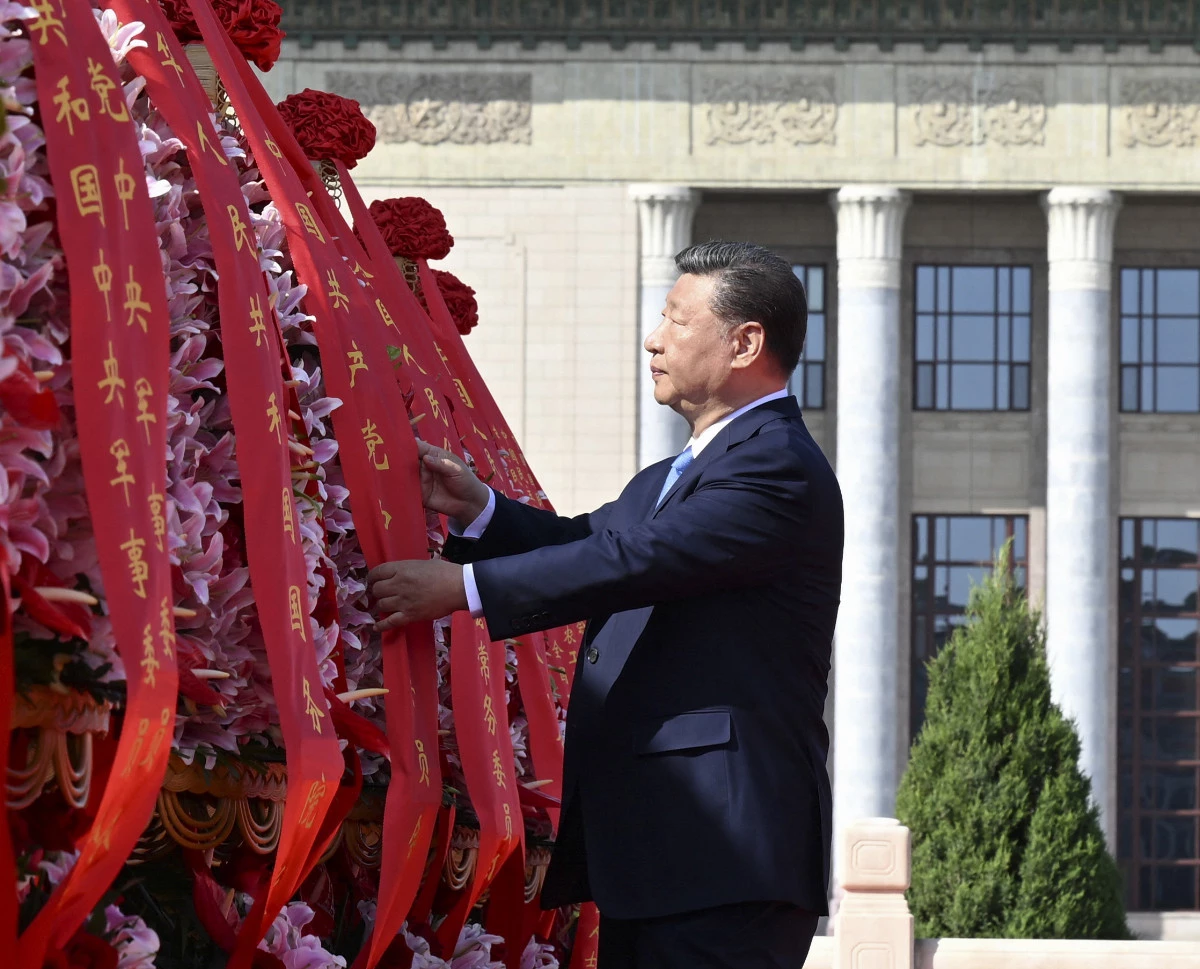
HISTORICAL WEIGHT
The latest five-year plan carries unusual weight, as only 10 years remain before 2035 -- the milestone year by which China aims to "basically achieve socialist modernization."
This marks the first goal in Xi's two-step blueprint for building China into a great modern socialist country in all respects by mid-century, or the centenary of New China.
A month earlier, China held a massive military parade in Tian'anmen Square marking the 80th anniversary of the victory in the Chinese People's War of Resistance Against Japanese Aggression and the World Anti-Fascist War.
Xi inspected the troops from an open-top Hongqi vehicle, a homegrown brand launched in 1958. Its creation was a hallmark achievement of China's first Five-Year Plan (1953-1957), which laid the industrial foundations for the newly established republic.
This sight of the vehicle on such a grand occasion underscored the link between China's early industrial beginnings and its ongoing modernization ambitions. "From the first plan to the 14th, one constant theme has been building China into a modern socialist country," said Xi.
Seven decades on, the contrast could not be starker. China now manufactures more than 200 types of major industrial products in the world's largest volumes. By the end of the current 14th Five-Year Plan in 2025, China's GDP is expected to reach 140 trillion yuan (about 19.7 trillion U.S. dollars).
Between 2021 and 2025, consumption has contributed around 60 percent of China's annual economic growth. Throughout the period, China has remained the world's second-largest consumer market, with retail sales rising to about 80 percent of U.S. levels. Its online retail market has been the world's largest for 12 straight years, while auto sales have topped the global charts for 16 years in a row.
Observers said the 15th Five-Year Plan is seen as another mobilization and overall deployment to build on momentum and advance Chinese modernization.
In his Tuesday address, Xi called for the sound design and implementation of the upcoming plan's targets and measures to ensure decisive progress toward China's goal of basically achieving socialist modernization.
Brazilian scholar Maria Luiza Falcao Silva sees a lesson for the wider world. "While much of the West grappled with cycles of crisis -- political gridlock, trade wars, populism -- China pressed ahead with a long-term national plan," she said. "The Chinese model is shaping the 21st century."

IMPACT FAR BEYOND BORDERS
While stressing the importance of "managing China's own affairs well" amid a complex external environment, Xi has also championed China's active role and responsibility as a major country in a turbulent world.
In September, following his earlier global initiatives on development, security, and civilization, Xi unveiled a new Global Governance Initiative (GGI) at the Shanghai Cooperation Organization summit, calling for broader efforts to forge a more just and equitable system of global governance.
Philemon Yang, president of the 79th session of the United Nations General Assembly, noted that the GGI further demonstrates China's commitment to an international system with the UN at its core.
"China's contributions have been impressive," said Yang, noting the country's unwavering support for the UN, its advocacy for dialogue and peace, and its dedication to the Global South.
Last week, in his video address at the UN Climate Summit held in New York, Xi announced a package of climate goals for 2035, including an absolute emissions reduction target -- a move widely seen as further evidence of China's commitment to global climate action.
Amid challenges ranging from climate change and energy and food crises to sluggish economic growth, countries around the world increasingly share a common future. In response, China has actively supported fellow developing nations through funding, training, and renewable energy projects.
Reaffirming China's commitment to peace, development, cooperation, and mutual benefit, Xi has pledged to create new opportunities for the world with its own development.
China is the "world's factory," with the most complete industrial chain. With 1.4 billion people -- including the world's largest middle-income group -- it is also a vast consumer market. Both as a producer and a consumer, China is deeply integrated with the global economy.
In trade alone, China is a major trading partner for over 150 countries and regions, and has signed 23 free trade agreements with 30 nations and regions. In 2024, trade with Belt and Road partners made up more than half of China's total, while the country's services trade exceeded 1 trillion U.S. dollars for the first time, placing the country second worldwide.
Analysts say Xi's concept of "a new development pattern," which is focused on the domestic economy while featuring positive interplay between domestic and international economic flows, is likely to gain further traction in the 15th Five-Year Plan. China's strengths in AI, advanced manufacturing and new energy are emerging as new drivers of global trade and investment.
During the holiday rush, smart factories in Yiwu -- the trading hub dubbed the "world's supermarket" -- are running at full capacity to fill orders for the 2026 FIFA World Cup.
Wen Congjian, a Yiwu-based football jersey designer and exporter, is hoping for another revenue surge like the last World Cup. "The shifts in Yiwu's market always mirror the pulse of the world," he said.
Amid rapidly evolving global challenges, China will continue to uphold true multilateralism and work with all nations to build a community with a shared future for humanity, Xi said at Tuesday's reception.